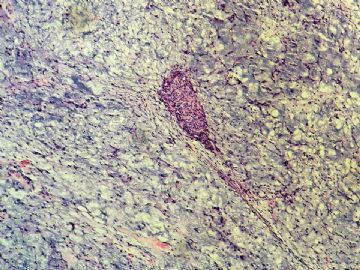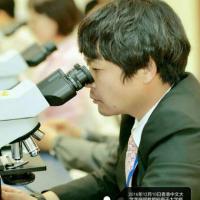| 图片: | |
|---|---|
| 名称: | |
| 描述: | |
- 咽后壁肿物,北京会诊意见
Histol Histopathol. 2010 Aug;25(8):957-62.
CD34-positive myxoid sarcoma of the retroperitoneum: a dilemma in differential diagnosis of multiple biopsy specimens.
Department of Pathology, Shizuoka Municipal Shimizu Hospital, Shizuoka, Japan. piyo0111jp@yahoo.co.jp
Abstract
The author reports a case of CD34-positive malignant myxoid sarcoma in the retroperitoneum with a dilemma of differential diagnosis in multiple biopsy specimens of different locations. A 79-year-old man was diagnosed with right renal pelvic carcinoma and nephrectomy was performed. The carcinoma was urothelial carcinoma (2 cm in diameter) without invasion. The patient was followed up, and a large retroperitoneal tumor was found two years after the operation. Multiple needle biopsies were performed. The patient then showed a hepatic metastasis, and died of cachexia one year after the detection of the retroperitoneal tumor. The needle biopsy specimens showed spindle cell sarcoma in the myxomatous stroma (80%) and in the non-myxomatous stroma (20%). Immunohistochemically, the tumor cells were positive for vimentin, CD34, CD99, bcl-2 and p53 protein. They were negative for cytokeratins, desmin, alpha-smooth muscle actin, S100 protein, melanosome, CEA, neuron specific enolase, CD68, factor VIII-related antigen, CD31, KIT, and PDGFRA. Ki67 labeling was 30%. A genetic analysis for KIT gene (exons 9, 11, 13 and 17) and PDGFRA gene (exons 12 and 18) showed no mutations. Although the differential diagnosis is problematic and difficult, the present case is probably dedifferentiated liposarcoma. The needle biopsy diagnosis of sarcomas is difficult and limited because sarcomas show heterogeneous histologies with regard to locations in the same tumor

- 王军臣




















